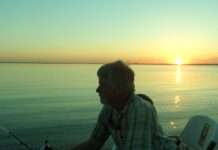“That horse is too old fashioned. It takes modern bloodlines and type to be successful in the Quarter Horse business today.”
Many times, new enthusiasts to Quarter Horse ownership and exhibiting made that comment four decades ago.
To an extent, they were correct. Horses with pedigrees different than what many breeders had been producing were the show ring winners and sale toppers.
They looked different and performed more exclusively to unique precision without names of foundation horses in their lineage.
Time has again turned the table. “What was old is new again,” according to increasing number of breeders today producing highest-priced, demanded, well-conformed athletic Quarter Horses.
In the ’50s and ’60s, it was typical for a Quarter Horse showing morning halter and afternoon rail pleasure-type competitions. Then back home in the evening rounding up cattle.
As shows became more discipline-specific, it was advantageous to have a specialized Quarter Horse that performed its show-particular job better.
However, that also had drawbacks. In some cases, bones and joints became more fragile, hoof sizes shrank and dispositions became temperamental.
Now, a number of Quarter Horse breeders are looking back to the tried-and-true traits of older bloodlines for today’s horses.
Deborah Skow, Horizon Quarter Horses, Keenesburg, Colorado, and John Anderson, Willow Creek Quarter Horses, Plainview, Nebraska, are among them
“When horsemen were establishing the Quarter Horse registry, they wanted to separate it from other breeds of horses,” Skow said. “They wanted an all-around horse that could do everything.”
The industry moved away from that to specialization. “However, the breed’s original focus is again our breeding objective,” Skow insisted. “We want that versatile, all-around athlete with a good disposition.”
Anderson’s breeding program focuses on producing a horse that can work. “We run a 15,000-head feedlot and an 800-head cow ranch. Our main focus is a true cow horse” he said. “Many of today’s cutting and reining horses are not true working outfit-type horses.”
Unlike many ranches, four-wheelers are not used in Anderson’s operation. “We have 12 to 14 geldings saddled every day to check pens and drive cows,” he said. “We need a horse from 14.3 to 15 hands, because a smaller horse has problems in ranch country.”
Both Skow and Anderson have foundation-type stallions and broodmares in their breeding programs.
“We are pretty picky about what we like,” Skow verified. “We will usually sit down and go carefully over what was produced the previous year.”
Eleven stallions used in the Horizon Quarter Horses program are mostly Poco Bueno or Doc Bar bred. “Certain mares have a better mix on one stallion than another. We are always looking to better our horses,” Skow said, “I like to look at the individual and consider if I need to breed more bone or foot. Then, I might select one of our foundation horses to breed to a more modern-bred horse.”
Willow Creek Quarter Horses produces colts to be consistent. “We don’t want to be all over the board in our breeding program,” Anderson said. “When somebody sees one of our geldings that’s what we expect all of our horses to look like.”
Those horses have a sound mind and athletic ability. “Good disposition is first priority for us,” Anderson said. “I feel like some of the older bloodlines are more inclined to that.”
Disposition is of high importance for Skow too. “We started out with some halter horses. 25 years ago. But that wasn’t going to serve the interests we had,” she said. “We’re selling mostly to an all-around market. We need horses that are going to be something our customers enjoy.”
Conformation of early-day Quarter Horses appeal more to these breeders. “They were big, bulldog-type horses with lots of muscle, plenty of bone and good feet,” Skow said. “A lot of modern lines are more refined with intent for speed which has led to health and soundness issues. Foundation horses can provide more solid bone and mass.”
Time-tested genetic positives work well with certain bloodlines to fill in genetic weaknesses. Yet all foundation bloodlines are not equal.
“I think the word ‘foundation’ has been over generalized and used a bit too loosely,” Anderson said. “There are some foundation bloodlines that needed a real cowboy to ride them. Most of today’s horse owners really can’t be considered working cowboys who have that ability.”
The breeders incorporate some line breeding into their programs. A horse is “line bred” or the product of line breeding when it has a common ancestor outside the fourth generation. Theories of line breeding can be very involved.
“While he was an outstanding cutter in his time, I don’t think Poco Bueno could compete well today,” Skow said. “We keep Poco Bueno stallions for breeding to some bloodlines of today. This gives us the best of both worlds and produces an exceptional horse.”
Willow Creek doesn’t over emphasize the foundation blood “We have a lot of Driftwood in our horses but we never tout the percentage,” Anderson said. “We like Driftwood, but we think to get caught up in single-trait selection lowers the bar on a breeding program. We always intend to make horses we produce better.”
CUTLINE
Driftwood, a 1932 bay colt, still can still have a positive influence on modern Quarter Horse bloodlines.





